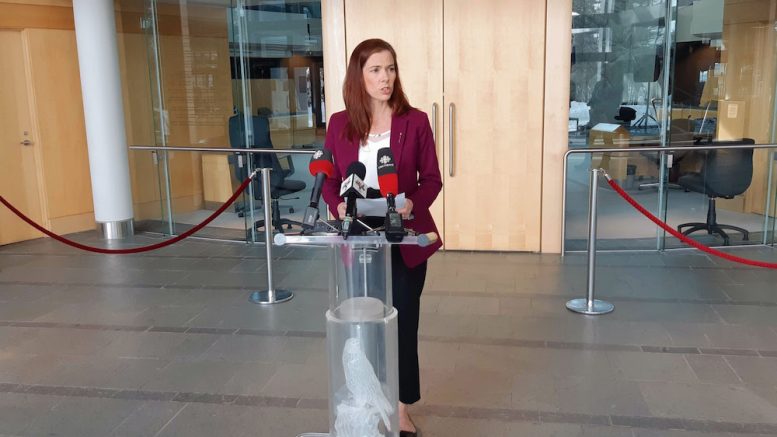In an ironic twist during a committee meeting on Wednesday, MLAs and cabinet members had to battle through connectivity complications while discussing how to address those exact kinds of issues.
Improving connectivity was one of several goals that Premier Caroline Cochrane touched upon while presenting her government’s COVID-19 recovery plan to regular MLAs.
At this point, that plan is scant on details.
Pandemic pinpoints social challenges
Martin Goldney is the secretary to cabinet and led the presentation on the plan.
He said the pandemic made for unprecedented times for the territorial government and it would seek input from Indigenous governments, the business community and non-governmental organizations among others.
During the meeting, Premier Cochrane acknowledged the difficulties of homelessness, overcrowded homes and addictions have had on implementing social distancing and isolation.
“We always knew we had challenges in those areas but the challenges in the context of this pandemic have brought them to the forefront,” she said.
She also pointed to new programs that cropped up in response to the pandemic, such as a managed alcohol program.
“We should not expect that we can simply return to the programs we had before,” said the premier.
But what programs would stick around after the pandemic isn’t clear.
No money for stalled economy
Nor did the plan outline any money to jumpstart the economy.
“I’m concerned that the lack of detail and this push to start committees and engage stakeholders is really an excuse for us not to get money out the door to small businesses,” said Yellowknife North MLA Rylund Johnson. “I’m concerned that this presentation has zero dollars attached to it.”
In response Finance Minister Caroline Wawzonek said the territorial government wants to engage with stakeholders to develop a broader, long-term plan.
She also pointed to the fact the assembly has not yet passed its budget for this year. (The last session of the legislative assembly was cut short to free up resources to respond to the pandemic, MLAs are to reconvene in late May.)
“I think we need to be a little careful before we commit to too many things,” said Wawzonek.
Several MLAs echoed concerns about supporting small businesses, including local airlines and tourism operations. The main response from the premier, Minister Wawzonek and Infrastructure/Industry, Tourism and Investment Minister Katrina Nokleby was that the GNWT is committed to northern businesses and that it was working with the federal government to get them money.
Profit needed, not loans
Hay River South MLA Rocky Simpson criticized the government’s response so far to help small businesses through loans and deferring payments.
“(Businesses) need to be able to generate a profit if they’re going to survive,” he said. “Loans and deferrals won’t do it.”
(BDIC just kicked off a second round of applications for low-interest loans for NWT businesses.)
He pointed to the department of infrastructure and the housing corporation as “most bang for our buck” to create projects to get northerners back to work.
Again, Minister Nokleby reiterated that she wanted to keep money for projects in the North as much as possible. She added that her department is re-evaluating the territorial Business Incentive Policy and would be presenting that to MLAs in the near future.
Frame Lake MLA Kevin O’Reilly urged the government to stay focused on efforts within its control.
“We cannot control commodity pricing, we cannot control financing to a great extent so I want to make sure our government is not going to spend too much time and emphasis to try and help the diamond mines recover,” he said. “We don’t have deep enough pockets… and I think we have to shift the focus to small businesses where we can actually have some influence.”
During his presentation, Goldney outlined three steps to dealing with the pandemic: response, recovery and resiliency.
Realistically, that first step is the quickest to be addressed.
With no active cases in the NWT for more than a week, the government is beginning to move towards recovery and residents should expect to be in this step for a long while still.





